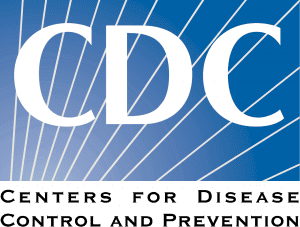- Serological Evidence of Mpox Virus Infection During Peak Mpox Transmission in New York City, July to August 2022
Authors found that approximately one in 15 vaccine-naive people - a little over 6% - in this study had antibodies to mpox during the height of the NYC outbreak. Overall seroprevalence was 6.4% (95% confidence interval [CI], 4.1%–8.8%); 3.7% among ciswomen (95% CI, 1.0%–9.1%), 7.0% among cismen with only ciswomen partners (95% CI, 2.0%–11.9%), and 7.8% among MSM (95% CI, 3.7%–11.9%). There was little variation in seroprevalence by race/ethnicity, age group, HIV status, or number of recent sex partners.
- N95 Filtering Facepiece Respirator Reuse, Extended Use, and Filtration Efficiency
Investigators conducted a multicenter, prospective cohort study at six United States EDs to assess N95 reuse by physicians, nurse practitioners, and nurses on N95 performance and safety (including filtration efficiency (FE)) from April 2021 to July 2022. Respirator models were grouped into 3M1860 (respirator 1), 3M1870 (respirator 2), and Halyard (respirator 3) categories. The primary outcome was FE and reduced FE (below 95%) . The exposure of interest was reuse, defined based on number of shifts (1, 2, 3, 4, or 5) worn. They reported mean and median filtration efficiency by shifts worn, stratified by N95 categories, and assessed differences in filtration efficiency. A mixed-effect model (including number of shifts used, N95 model, use of skin protectant, and donning and doffing) assessed factors associated with reduced FE. They enrolled 365 participants and report that wearing N95s for an increasing number of shifts was associated with reduced mean filtration efficiency (ANOVA P value <.001). The proportion of respirators with FE less than 95% increased when they were worn for more shifts—1.8% (95% CI, 0.4%-5.0%) after 1 shift; 10.1% (95% CI, 4.5%-17%) after 2 shifts; and 28.8% (95% CI, 18%-43%) after 3 shifts.
- Enhanced Placental Antibody Transfer Efficiency with Longer Interval Between Maternal RSV Vaccination and Birth
Maternal bivalent RSVpreF RSV vaccination to protect neonates and infants was approved in September 2023 for administration during the third trimester to protect neonates and infants. Currently, data are lacking on how maternal vaccine timing within the approved window affects the transfer of antibodies from mother to fetus. Here, investigators looked at gestational age at vaccination and time elapsed from maternal RSV vaccination to delivery impacted transfer of maternal antibodies measured in the umbilical cord at delivery and in peripheral blood of 2-month infants. They also examined differences in maternal and cord RSV antibody levels achieved by vaccination versus RSV infection. They conducted a prospective cohort study at two academic medical centers between September 20, 2023 and March 21, 2024, enrolling 124 individuals who received the RSV vaccine during pregnancy. Infant capillary blood was collected at 2 months of age from 29 of the infants. Maternal and cord IgG levels achieved by RSV vaccination were compared to those associated with maternal RSV infection, using banked blood. Levels of IgG against RSV strain A2 and B fusion (F) and attachment (G) proteins and against pertussis toxin (as a comparator antigen from a vaccine routinely administered earlier in pregnancy) were measured. Maternal RSV vaccination resulted in significantly higher maternal and cord anti-RSV F antibody levels than infection (5.72 vs 4.82 log10MFI, p < 0.0001 maternal; 5.81 vs 5.03 log10MFI, p < 0.0001 cord). Maternal vaccination 2-3 weeks and 3-4 weeks prior to delivery was associated with significantly lower cord:maternal transfer ratios than were observed when vaccination occurred > 5 weeks prior to delivery (p = 0.03 for 2-3 weeks, p = 0.007 for 3-4 weeks), and significantly lower transfer ratios than observed for pertussis vaccination administered prior to 30 weeks’ gestation (p = 0.008 for 2-3 weeks, p = 0.03 for 3-4 weeks, similar at > 4 weeks). Vaccine administration earlier in the approved 32-36 week window (at least 5 weeks prior to delivery) results in the highest transplacental transfer of maternal antibodies to the neonate.
Situation Dashboards

World Health Organization (WHO)
Novel Coronavirus (COVID-19) Situation from World Health Organization (WHO)

Johns Hopkins University (JHU)
Coronavirus COVID-19 Global Cases by the Center for Systems Science and Engineering (CSSE) at JHU

COVID-19 in US and Canada
1Point3Acres Real-Time Coronavirus (COVID-19) Updates in US and Canada with Credible Sources

Genomic Epidemiology COVID-19
Genomic Epidemiology of (COVID-19) Maintained by the Nextstrain team, enabled by data from GISAID.





